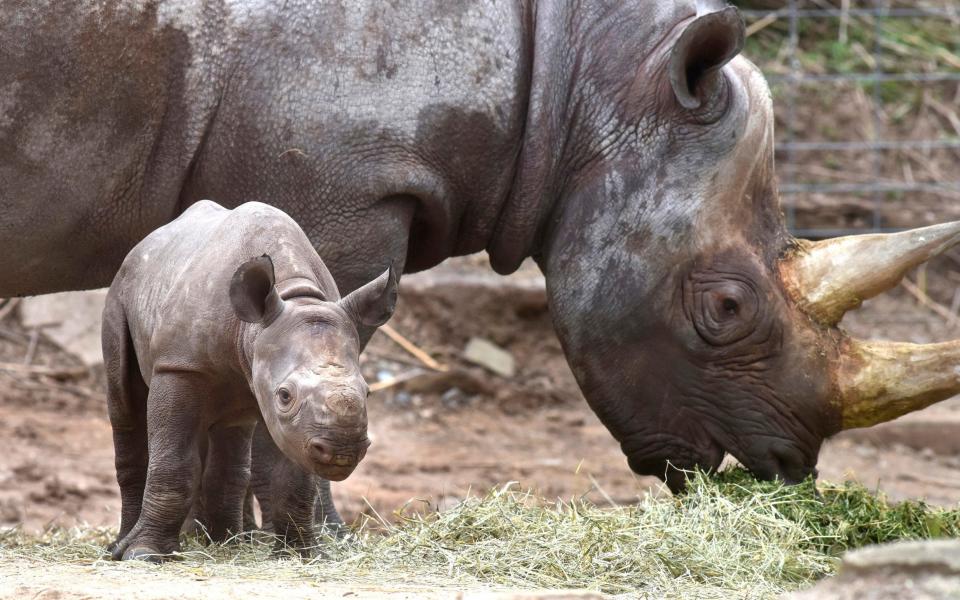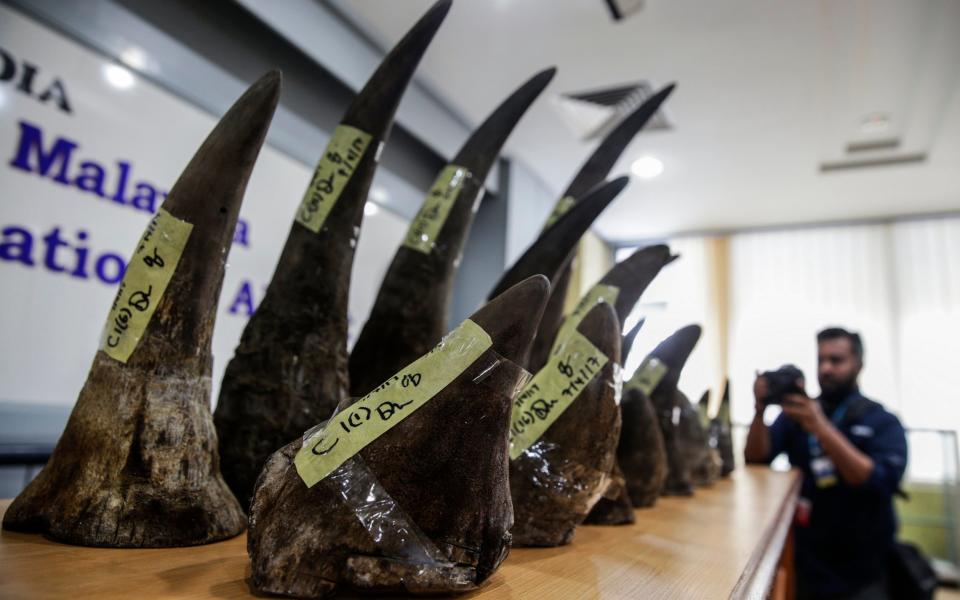It is now legal to trade rhino horn in South Africa – but will the ruling save or slay the troubled species?

The killing of a white rhino in a French zoo earlier this year was as brutal as it was shocking. In the dead of night, poachers broke into the Thoiry safari park near Paris and shot the four-year-old rhino, named Vince, three times in the head.
They then took a chainsaw to his first horn, hacking it off completely, before failing in an attempt to remove the second. The poachers fled before dawn, but Vince’s body was not discovered for hours.
Four weeks later, and more than 5,000 miles away in Johannesburg, South Africa’s highest court overturned a ban on domestic trade in rhino horn. The decision followed a lengthy and predictably bitter legal battle, and has raised a series of pressing questions about what happens next for the multi-million pound rhino horn industry.
A primary concern is that the ruling will only serve to aid the lucrative illegal trade of rhino horn, which has led to a surge in poaching in the last decade and is the reason for a drastic dwindling in rhino numbers. According to figures from Traffic, the wildlife trade monitoring network, 13 rhinos were killed in 2007. In 2008 that figure rose to 83, and in 2014 it was more than 1200.

Such a dramatic rise in killings has been the result of a similarly spectacular growth in demand for rhino horn, especially in Vietnam and China. In Vietnam, it is seen as a symbol of wealth, and is regarded as a coolant that can detoxify the body. It is used as a treatment for inflictions as serious as cancer (alongside chemotherapy), and as mundane as a hangover.
In the growing Vietnamese economy, with a thriving middle class, rhino horn is highly sought-after, as well as extremely expensive. “It is now very much seen as a status symbol because it is rare and so hard to get,” says Susie Offord-Woolley, the managing director of the Save the Rhino charity.
Back in South Africa, opinion remains divided over what the lifting of the ban on domestic trade, which was introduced in 2009, will do for rhino safety. International trade has been banned since 1977, and that remains the case.
Sitting firmly in the pro-legalisation camp are private rhino owners, who own around 6,500 white and black rhinos, nearly 40pc of the country’s population. They are convinced that the legitimising of the industry will reduce the poaching risk, as well as bring some much-needed funds back into the country’s conservation efforts.
The lifting of the ban allows them to take to market the stockpiles that many owners have been building up for years.
“We believe we are able to sell rhino horn at a price substantially lower than that of the illegal market,” says Pelham Jones, the chairman of the Private Rhino Owners Association.
“So the illegal market would respond to that by saying the only way we can stay in business is to try to undercut the current legal market. We believe this is going to force many illegal players out.”
It was private rhino owners who lobbied for the lifting of the 2009 moratorium banning rhino horn trade in South Africa. At the forefront of the legal case, which ended with the moratorium being overturned on a technicality, were rhino farmers John Kruger and John Hume, the world’s largest owner of rhinos.
The benefits to private owners are obvious, with many essentially sitting on piles of gold they they were previously not allowed to sell. The estimated value of Mr Hume’s horn collection, for example, is around $45m (£35m). Yet Mr Jones describes allegations that private owners are motivated solely by profits as both “disgraceful and offensive”.
“We have spent billions of rand without any income whatsoever from the species,” he says. “We have private rhino owners laying down their lives to protect the species, showing total commitment and dedication, yet we get described as rich white farmers wanting to profiteer.

“I find it totally bizarre that we are judged because of an attempt to meet end-user demand. We did not enter this affray because we wanted to sell rhino horn. We have been forced into this situation. But if, from the sale of material from stockpiles, money can come back to fund conservation, is that not wonderful?”
The trade, the private owners say, will be closely monitored via DNA samples on databases, and all involved will need permits. Jones adds that security points will stop the horns leaking out of the country and onto the international market, while buyers will be subject to stockpile audits to ensure everything is above board.
For organisations such as Save the Rhino, here is where the issue lies. Such extensive controls and legislation fall out of the hands of rhino owners, and are under the jurisdiction of the government and law enforcement agencies, where the appropriate procedures will take time to be installed, and extensive resources to be monitored.
“In principle, we would not have objection to trade,” says Cathy Dean, Save the Rhino’s chief executive. “Our concern is that the right conditions are not in place to make sure that it is done properly.”

Another issue is exactly who will be buying the rhino horn. The domestic market is limited in comparison to the international demand, so it is expected that buyers will be speculators with hopes that international trade is soon permitted.
For anyone with the ambition of cashing in, that is surely the ultimate goal. In a number of ways, the legalisation of domestic trade in South Africa is therefore a trial. But if it were to go wrong, the consequences are potentially dreadful.
“I expect there will be loopholes in the system that will be exploited,” Dean says. “If that happens then it is going to be an own goal, and they [the private traders] will have shot themselves in the foot, because it will push back any chance of getting an international trade proposal through.”
If it does collapse, then there is a good chance that the incentive to maintain and, crucially, protect the species might collapse with it. As Jones says, looking after rhino is an expensive business, and it has cost private owners billions of rand.
The fear, then, is that with no possible return on that investment, the species will simply be too expensive to protect. And if that is the case, it will be the rhinos who pay the ultimate price.

 Yahoo Finance
Yahoo Finance 